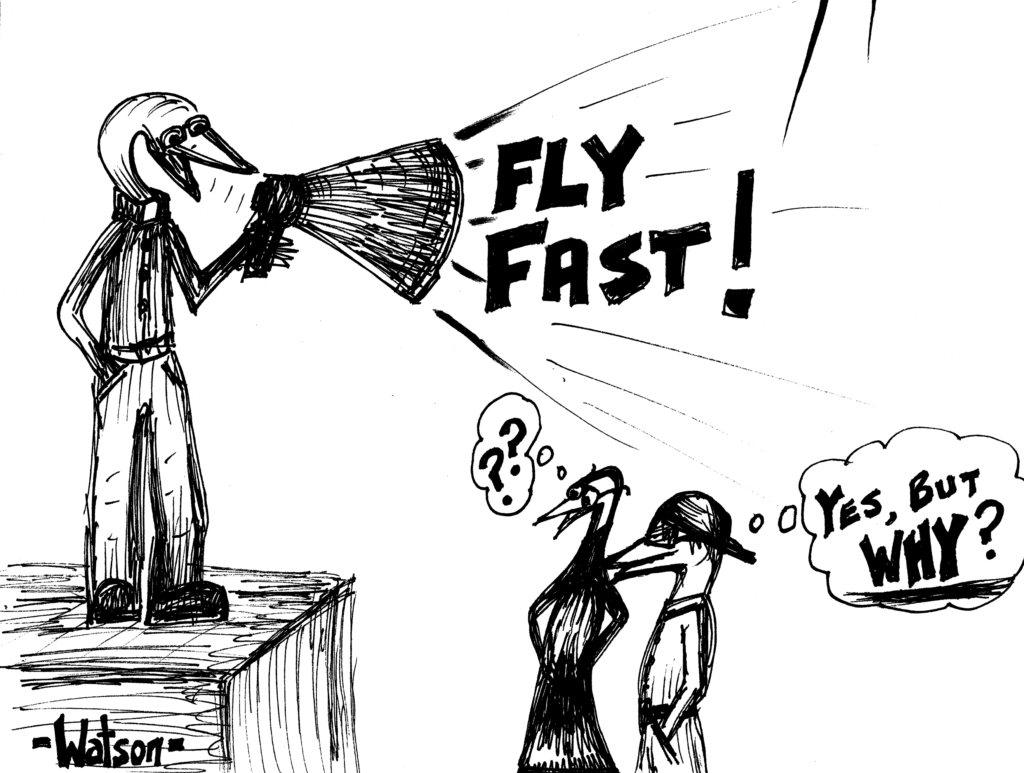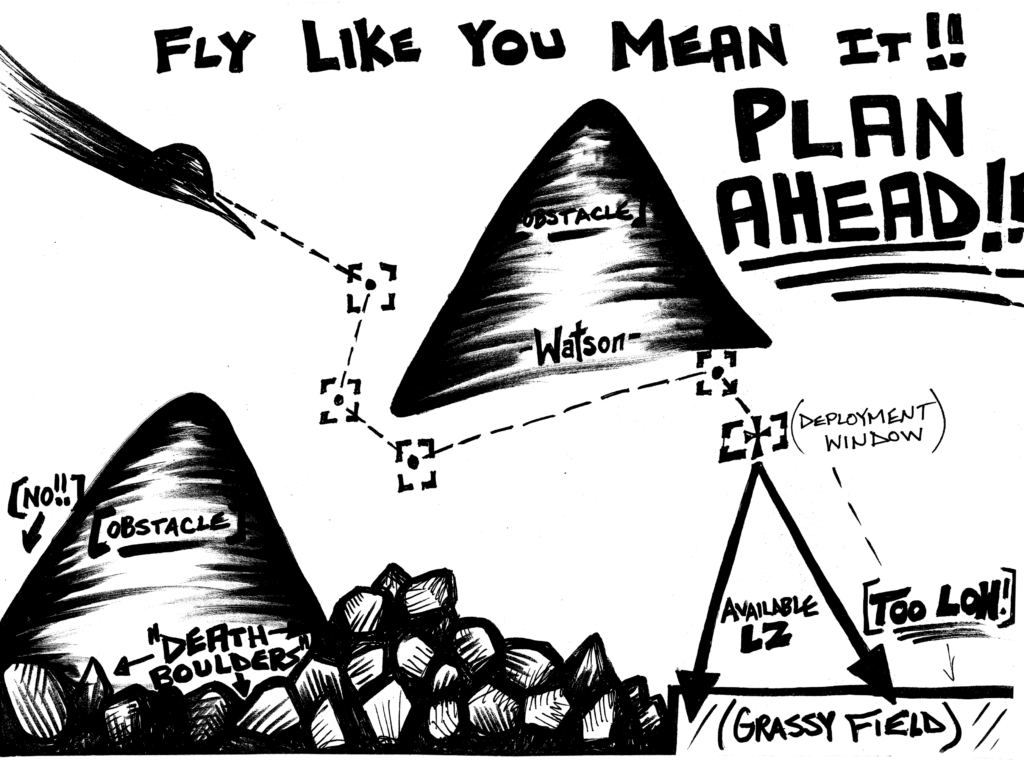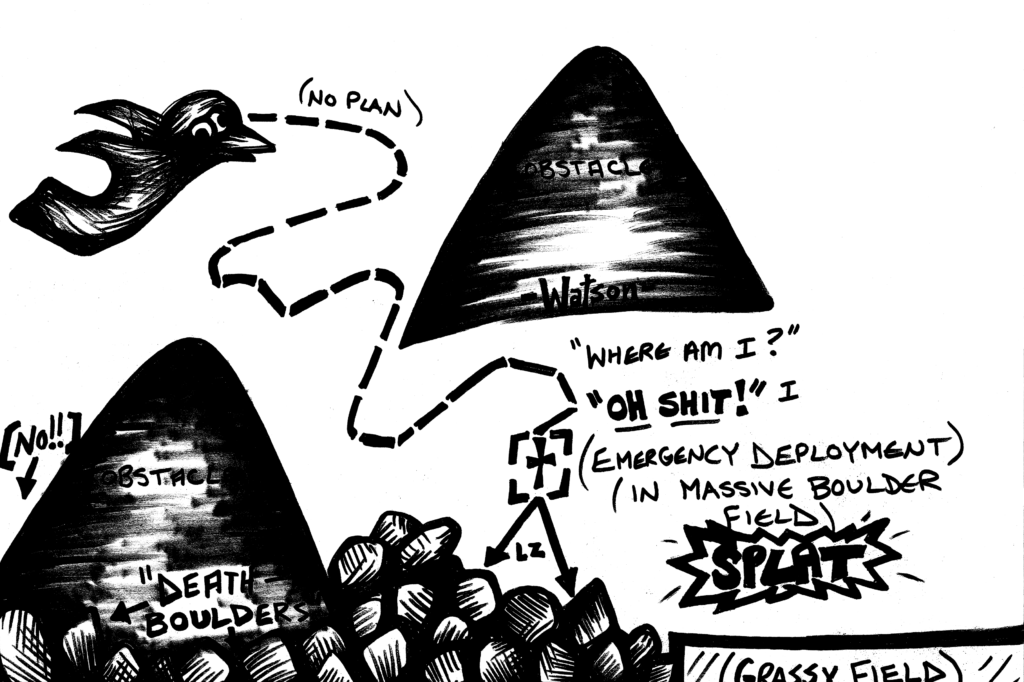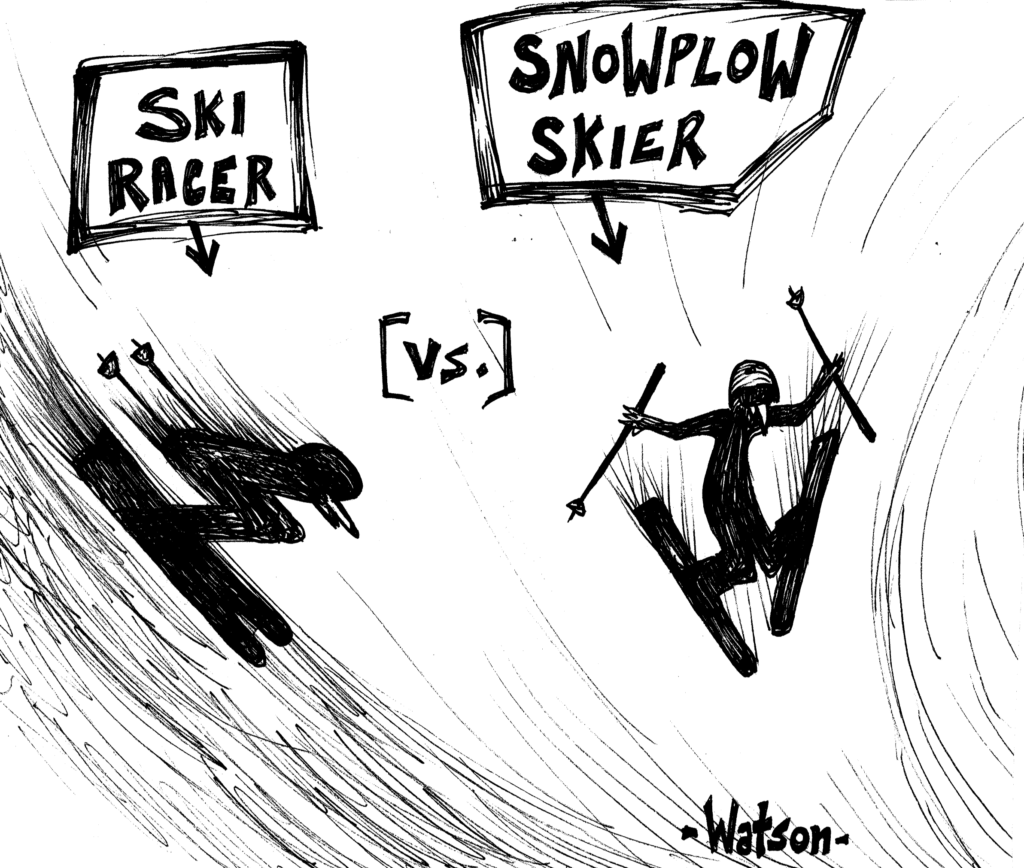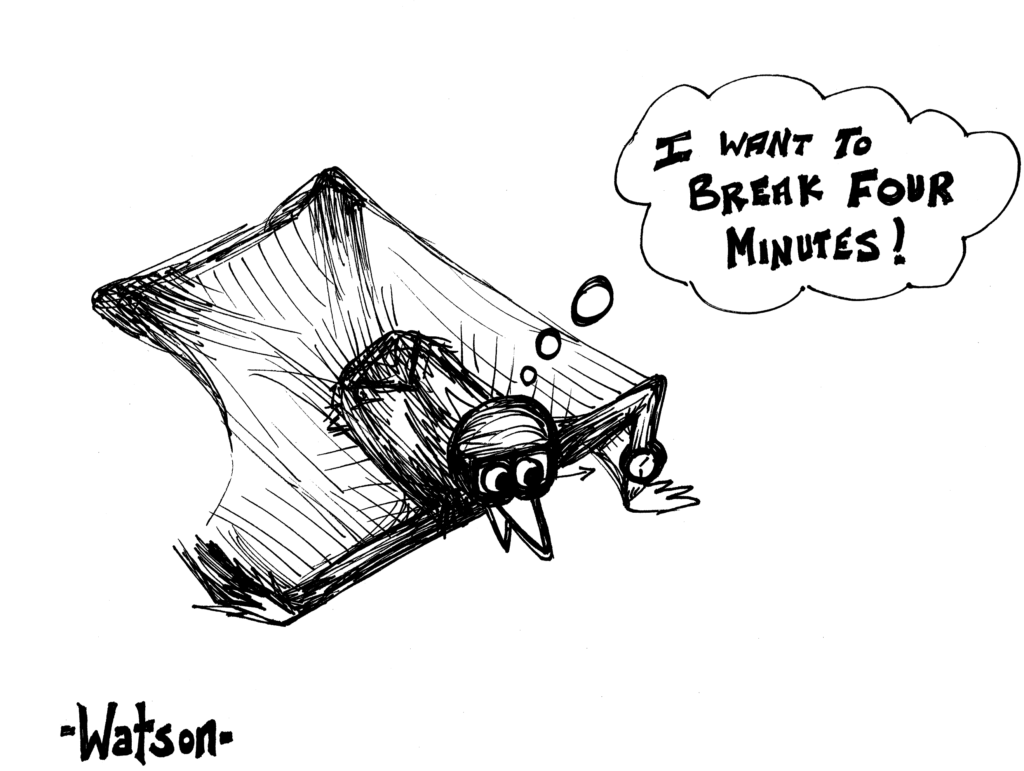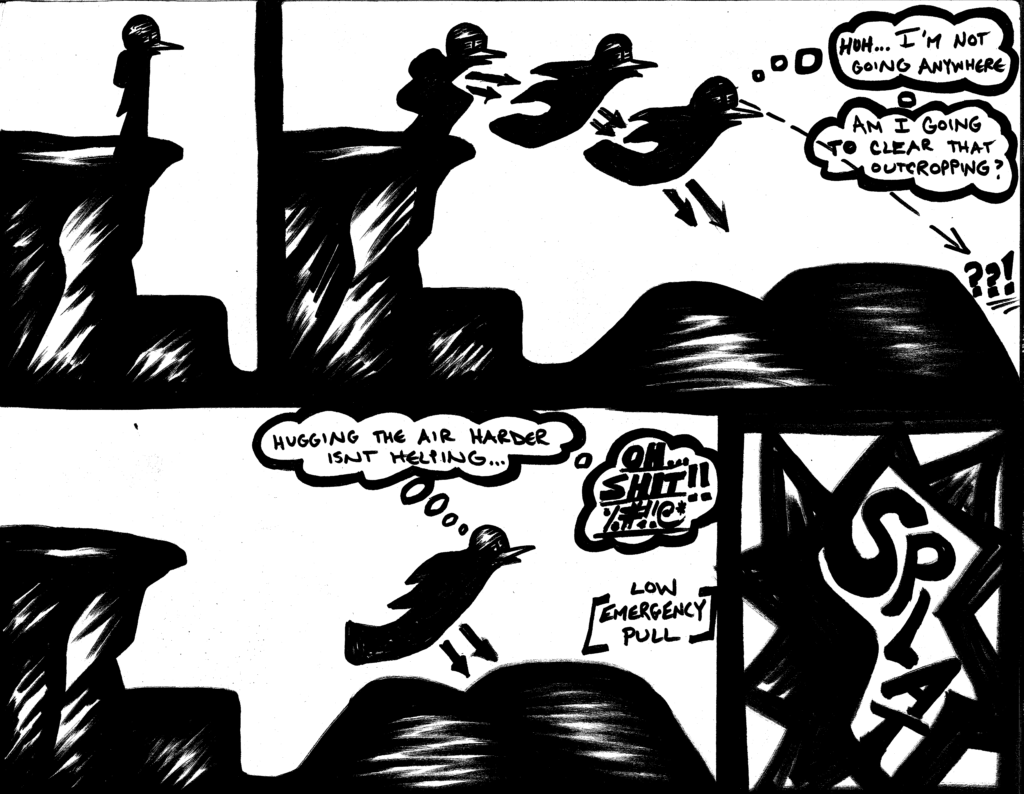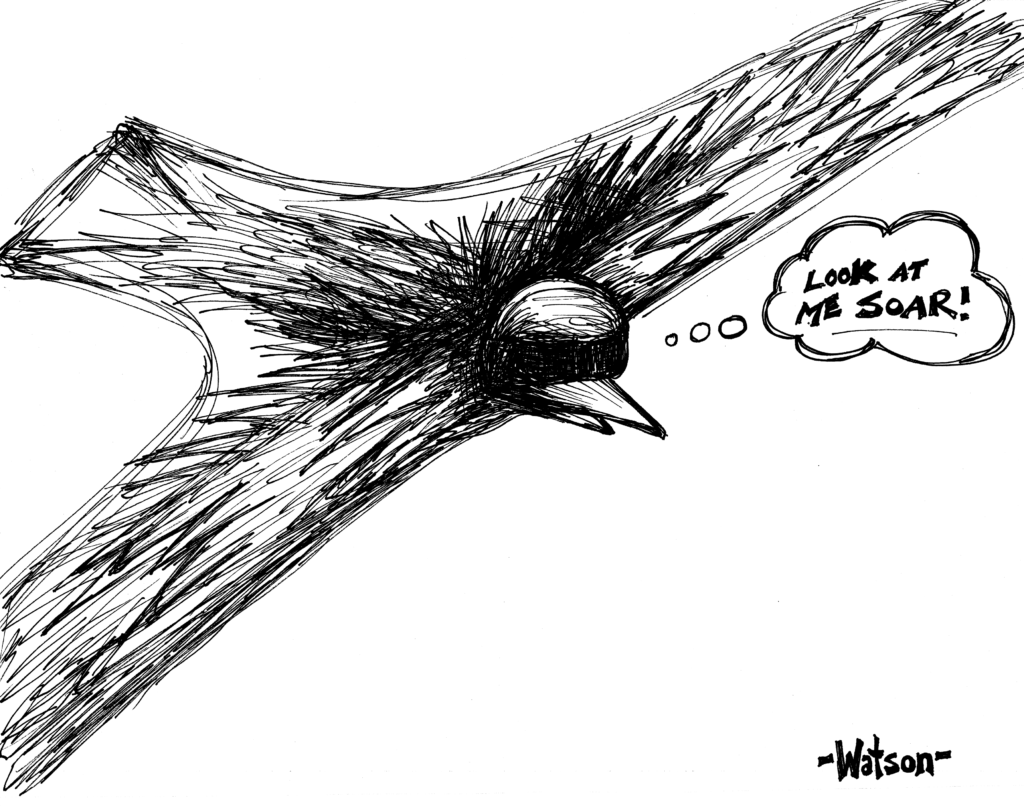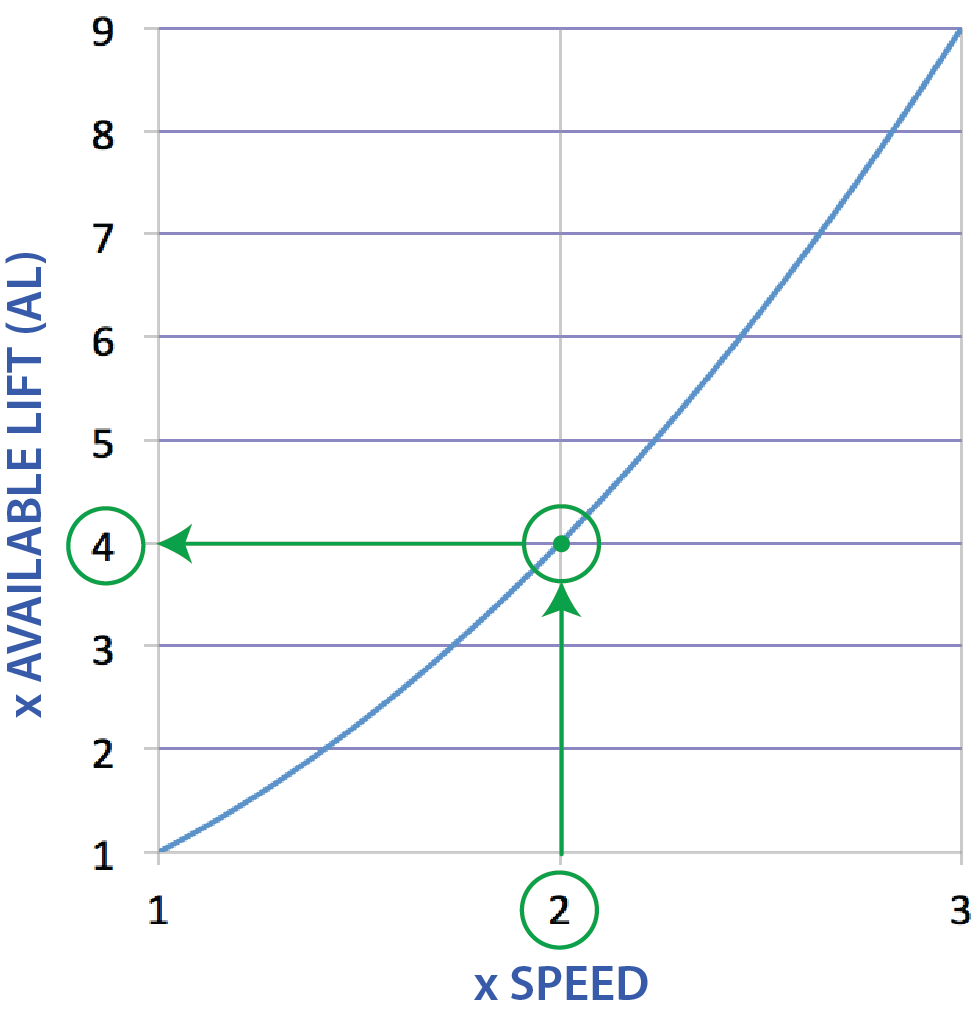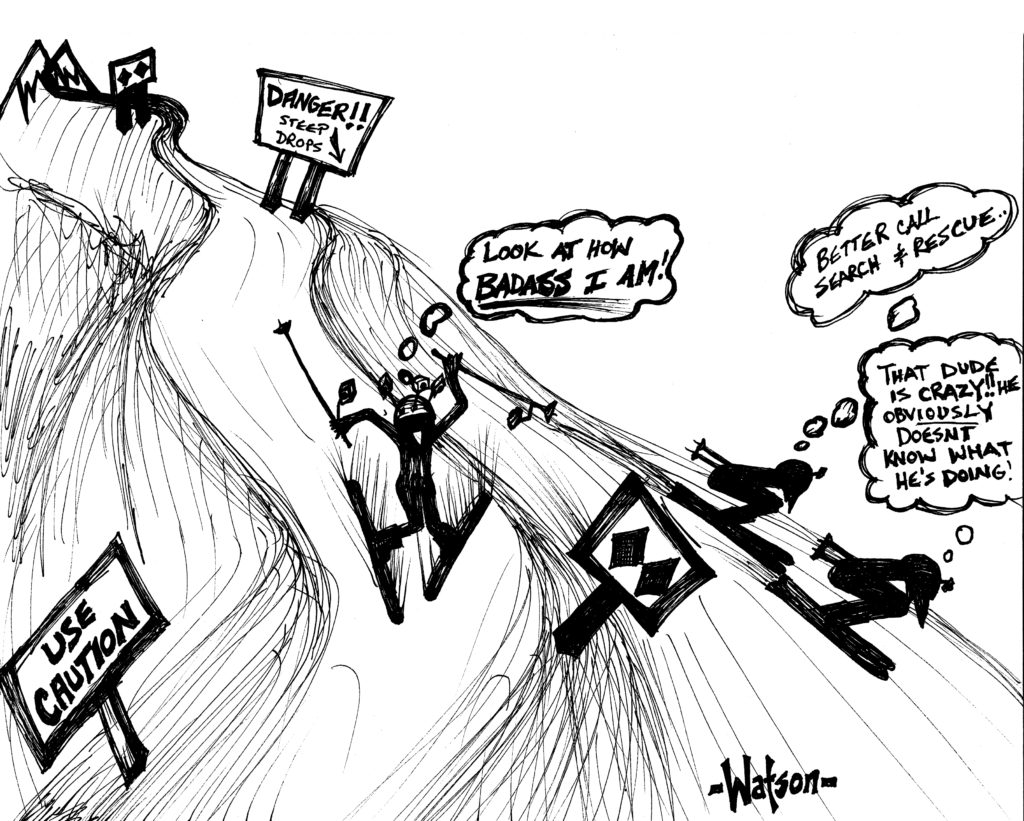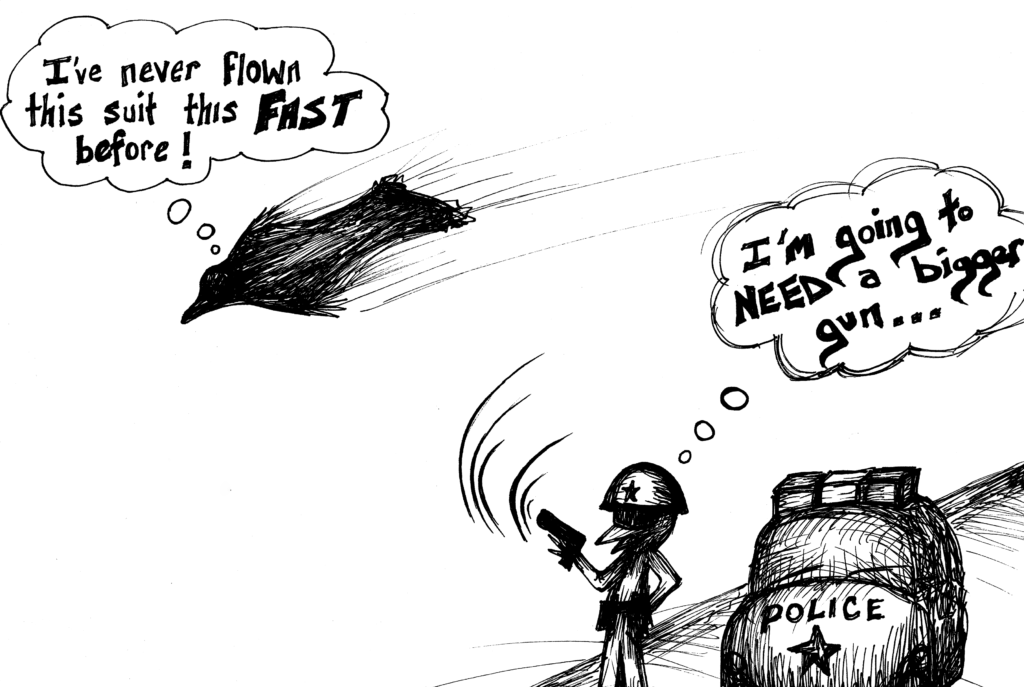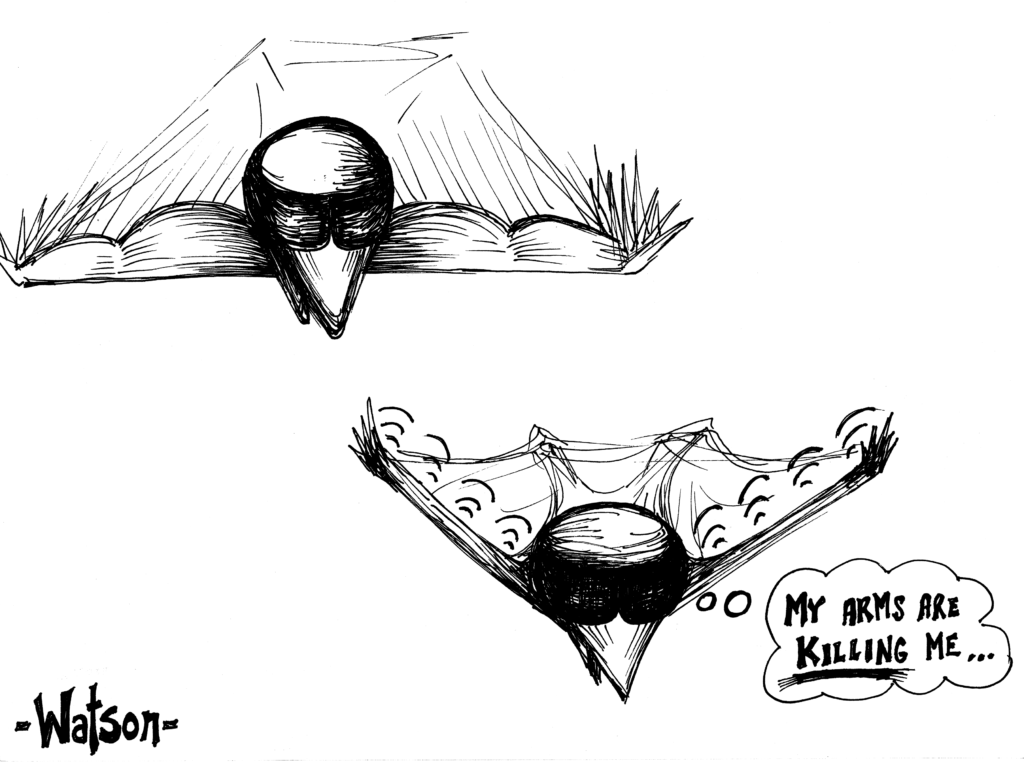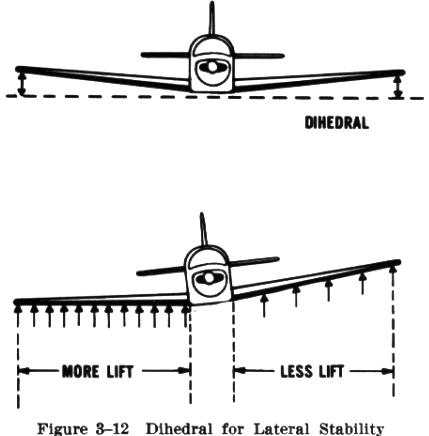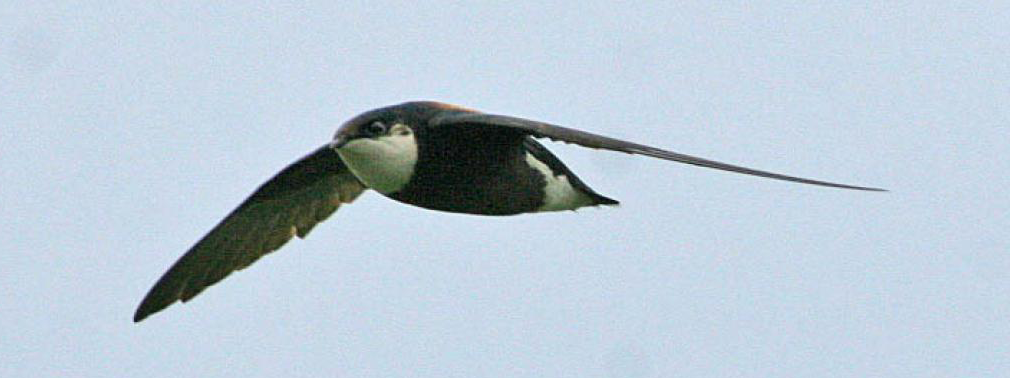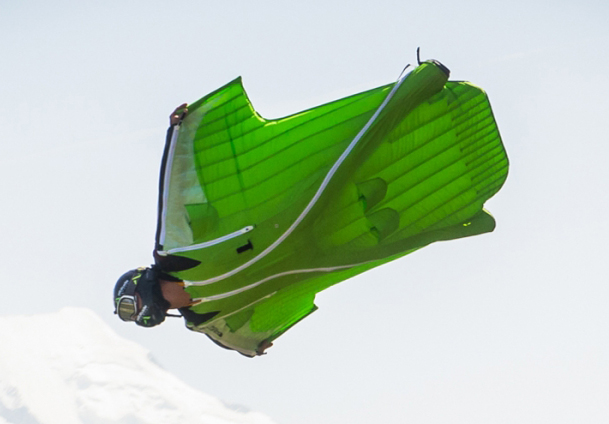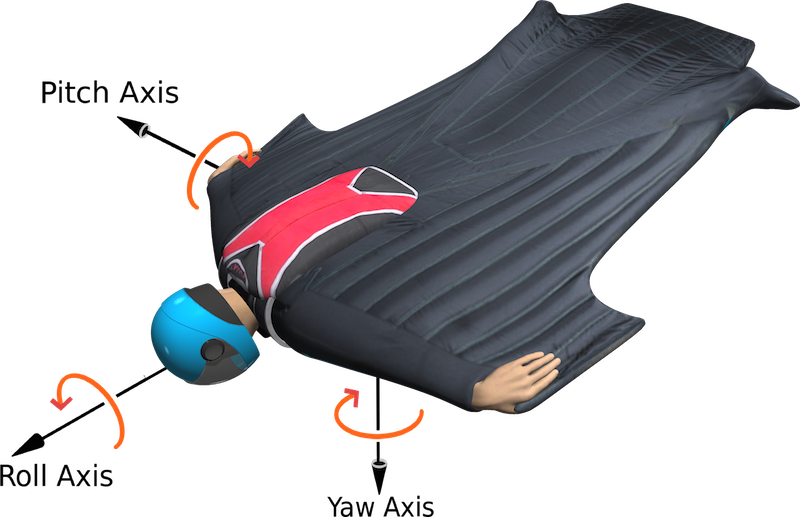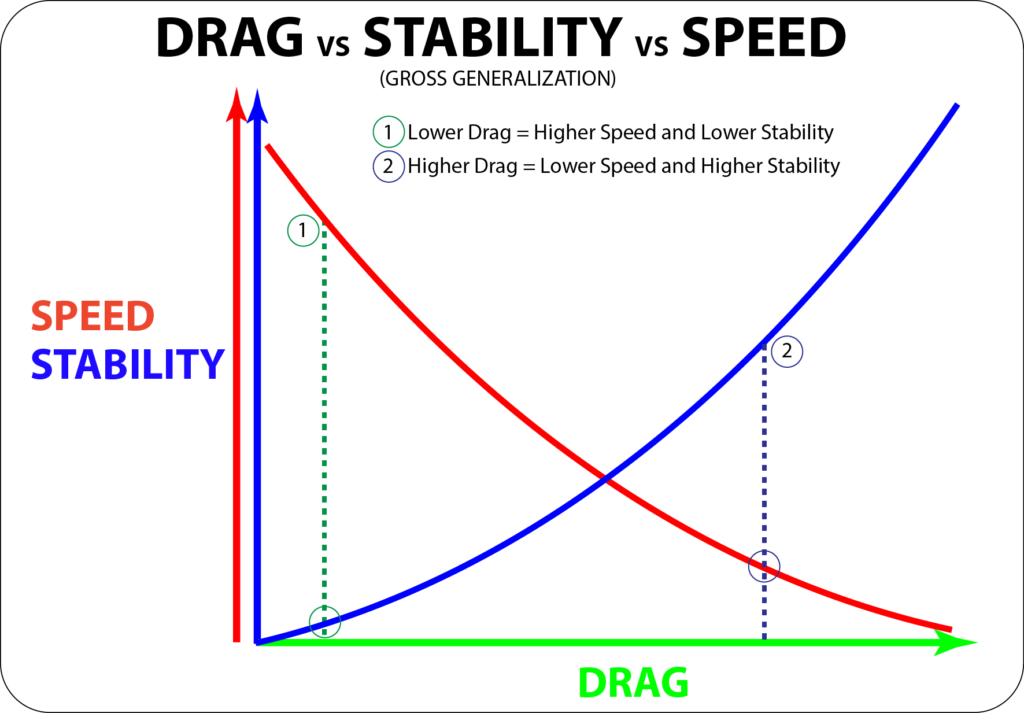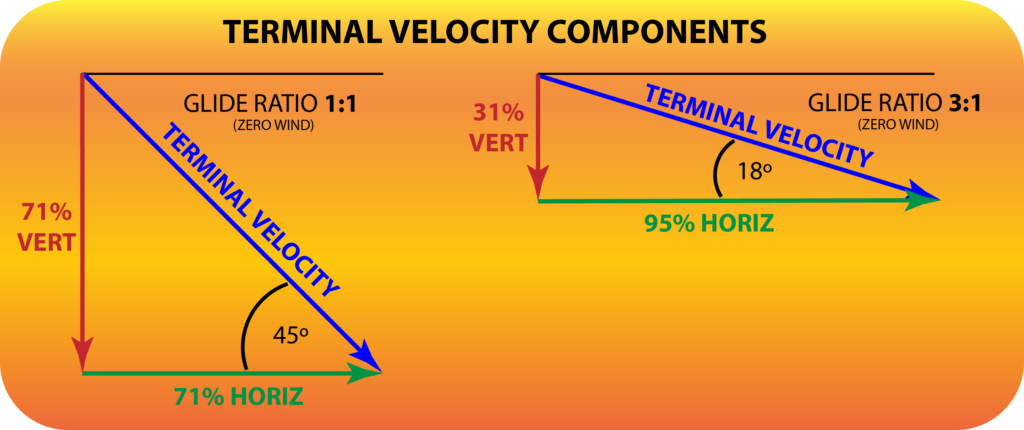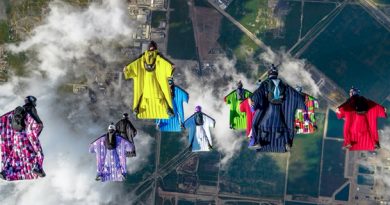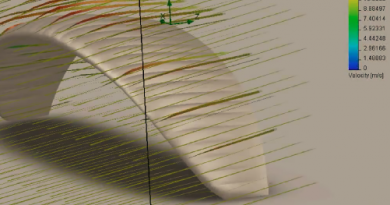Wing Suite: Aerodinamics:Why Fly Fast?
WBKS 2016 is off to a sickening start. The global Wingsuit Base Killing Season. June through September. Every year. The last two months have been horrific. It doesn’t matter if it’s your first WB jump, or your 1000th. Nobody is kill-proof. The Base Fatality List raced up to #300 and blew right through without even blinking. We lost some newbies, and we lost some of our most current, talented and experienced wingsuiters.
I’m reminded of the 1910’s where fliers (the term pilot hadn’t even been coined yet) were literally town heroes for surviving each and every flight. Without flight schools and instructors, there was nothing to teach or be taught. Without a firm grasp on aerodynamic theory, there were no procedures or techniques to study. Without cockpit instrumentation, there were no safe numbers to fly. Without regulations, there were no rules to follow. In the ultra-niche community of flying machines, it was common practice for multiple fliers to die in the same week, all pushing to be the first to fly a vertical loop without spinning into the ground. Ego, ambition, opportunity and excitement ensured a long line of applicants. The body count continued to rise.
But somewhere along the way, a shift occurred. Experienced pilots started teaching newbies. Flight schools opened. Aerodynamic theory became, well, less of a theory. Training became recognized as a good way to stay alive. Flight instruments were developed that unlocked all the little flight performance secrets that airplanes had been hiding for so many years. And the body count dropped.
FLY FAST, PULL HIGH.
SPOILER ALERT: Pretty much everything I will say in this and future articles can be distilled down to these four simple syllables.
That’s it, end of lesson. Nothing more to be said.
Sounds simple, right? How hard can it be?
Just two little directives.
And yet, WBKS 2016 has already notched up multiple kills from friends NOT flying fast, and NOT pulling high. The same thing happened last season, and the season before that.
“Speed is life.”
“Fly fast.”
“Always carry extra airspeed.”
“Speed is your friend.”
“Never run out of airspeed, altitude, and ideas.”
“Ok folks, thanks for listening. Go out there and have fun, don’t die. End of lesson. Oh, and pull high.”
Seriously, that’s usually where the standard airspeed lesson ends. I’ve heard it myself from wingsuit coaches, sponsored WB pilots, and folks spouting the party line.
Aaaagh… but there’s so much more to discuss!
Well, hang on for the ride. This is part 1 of a 2-part article on Airspeed. Part 1, we’re going to dive down the rabbit hole of Why Fly Fast? In Part 2, we’ll explore both old school and new school styles of airspeed control in our attempts to fly like a falcon.
Part 1: WHY FLY FAST?
Well first, let’s break it down a little more. Fly Fast = FLY + FAST
- FLY = Fly like you mean it
- FLY = You are pilot-in-command, responsible for entire outcome of your flight
- FLY = Nothing happens on your aircraft without you authorizing it
- FLY ≠ Stall your wing unintentionally. Ever.
- FLY ≠ Relax in the suit and let it take you for a ride
- FAST = Faster than best-glide. Much faster.
- FAST = Use those arm muscles
- FAST = Pierce the air, not plow through it.
- FAST ≠ Battle to stay in the air as long as possible
So many WB fatalities are a variation of the same story. Higher skill and experience tends to lead to more spectacular and dynamic arrivals to the scene of the crash, but the core theme is the same.
Exit into slow flight, mush along chest-high, head-high, just above stall speed, trying to hang in the air forever.
“Huh, I’m not going anywhere, I’ll try hugging the air harder for more lift.”
Suit starts to stall, drag increases.
“Whoa, am I going to clear that outcropping?”
Pitch up even more, stall deeper, sink rate builds.
“Oh shit!”
Emergency pitch, line stretch, splat.
It happens over, and over, and over again.
Ugh.
CRAZY THOUGHT OF THE DAY:
I can declare with absolute certainty that nobody has ever died in Wingsuit BASE from flying too slow. You can fly fast, slow, any speed you like. Your speed through the air does NOT kill you. Say whaaaat….?
What kills you is the sudden stop at the end. Folks spout that ‘Speed is Life’, but really, smashing into a wall at 120mph is going to kill you just as dead as stalling into the ground at 60mph. Stay away from the ground. It’s that simple.
So, what are some ways to stay away from the ground in a flying device? We could, perhaps, generate more Lift? Yes, great idea. More lift = more life!
Let me say that again. More lift = more life.
The easiest way to generate slow-speed lift is to grow longer wings. More wingspan = more lift.
Unfortunately, human arms might as well be T-Rex arms in Nature’s encyclopedia of flying devices. Nature never intended us to fly. We’re breaking all the rules. Remember our ‘WTF are we really doing?’ discussion on how ultra-low-efficient our wingsuits are?
Well, if we can’t grow longer wings, what’s the next best way to increase life, I mean, lift?
If you do some digging into the equations governing aerodynamics, it turns out that Airspeed is the next best way to increase available lift. Actually, it’s a reallygood way to increase Available Lift*.
*AVAILABLE LIFT (AL) is a term I am coining for this discussion. AL is defined as the potential lift available from your wingsuit if you instantly demanded maximum lift at any particular point in your flight. AL is a fluid parameter and fluctuates with each phase of a WB flight: exit, start, flight, flare, and deployment. Flying at sustained max AL is strictly NOT recommended. You will bleed all of your energy, stall your wing, and die. The BFL is smothered with this exact type of fatality. However, flying WITH high AL in reserves is smart. Flying with high AL and never having to use it to save your ass, that’s even smarter.
So, how are AL and airspeed related? Great question.
Have you ever held a 42” pilot chute out the window while driving at 10mph? It’s nothing crazy, easily doable if you’re careful. Now double your speed to 20mph and stick that pilot chute out the window again. You may intuitively expect the drag force to double. Well, we almost broke Dorkzonehero’s arm on the doorframe pillar as the PC was viciously yanked aft. Waaay more than double the force! If you enjoy using healthy arms, please take our word for it.
Why did doubling airspeed disproportionately increase our PC drag force?
As it turns out, airspeed squares aerodynamic force, represented by the relation below, where F = Force and V = Velocity/Airspeed (this is the only formula I’ll put in Part 1, I swear).
F ≈ V2 = VxV
Translation: Force is proportional to velocity squared.
Force can be either Drag or Lift. The square law is the same.
Pick a speed, any speed. Available lift at that speed equals 1x. Now, double that speed, and your new AL is (2)2 = 4x
Increase airspeed 100%, available lift is now 400%.
Double your airspeed, quadruple your AL!
This square law is the hidden magic behind the statement ‘Fly Fast’. Fully understanding this one concept is the single most important step in becoming a safer wingsuit pilot.
Now for the reality check. Not many wingsuit pilots can double their airspeed, so that’s an unrealistic example. Let’s crunch the numbers on some more realistic gains.
Speed Increase: New AL:
Add 10% (110%)2 = 121%
Add 20% (120%)2 = 144%
Add 50% (150%)2 = 225%
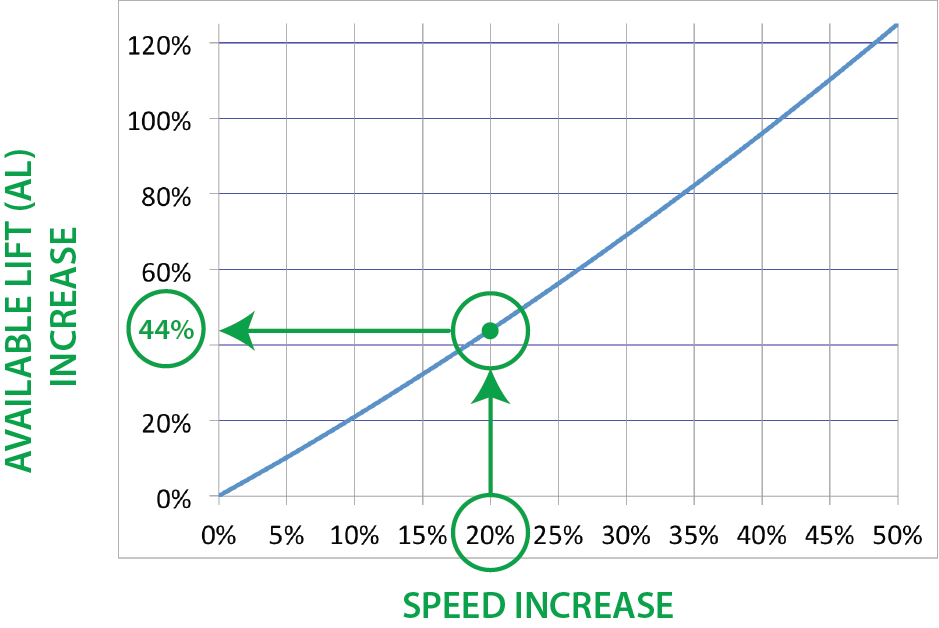
These are all realistic goals you can and must train to.
This weekend at your local dropzone, record how fast you can fly. The technology is out there. Now, in that same suit, set yourself a 10% increase goal. If you can train yourself to tap that extra 10% on demand, you have now given yourself a 21% increase in AL. That is a huuuge gain in the WB environment. Now bump that goal up again. Always be training to fly faster. Screw the flocking dives, I want the mach-ing dives.
Mach, not flock! Mach, not flock! Mach, not…. Ok, you get the idea.
Here’s the beautiful takeaway: For every extra scrap of airspeed you finesse out of your suit, you are rewarded with an increasing return in AL. It’s the best airline miles program on earth! If it sounds like a Ponzi scheme, well, it is. If airspeed was currency, the rich would be getting richer and the poor getting poorer.
Wait, what about that last part? The poor getting poorer?
Here’s the catch: The formula goes both ways. Cut your airspeed in half, and you decrease AL by 4x!
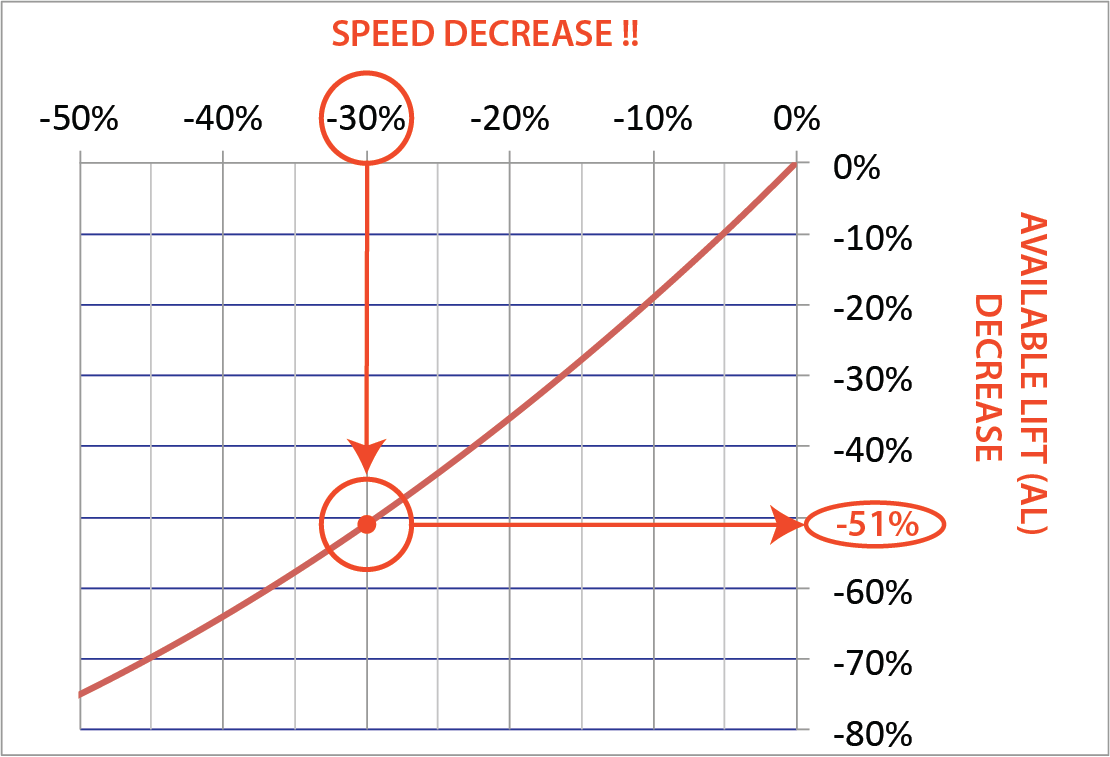
Speed Decrease: Remaining AL: AL Lost:
Slow 10% (90%)2 = 81% 19% less AL
Slow 20% (80%)2 = 64% 36% less AL
Slow 50% (50%)2 = 25% 75% less AL
ANY SPEED DECREASE TAPS THE REALLY SCARY PART OF THIS EQUATION!!
Every wingsuit pilot I know can easily decrease their airspeed by 30% in seconds, without even trying. That’s a 50% decrease in AL! This is precisely why it’s impossible to flare your wingsuit when you’re flying slow. You’ve run out of AL! To make matters worse, any attempt at a slow-speed flare actually increases drag (we’ll get to that in another article), resulting in a higher sink rate and the complete opposite of your intended result. This is the tragically repeated spiral directly responsible for multiple WB fatalities every year. In just the last 2 months, we’ve already seen multiple kills in this exact scenario.
“Cause of Death: Pilot Error – Inability to maintain sufficient airspeed and altitude”
Again, and again, and again… ugh!
So, in the future, any time you feel your wingsuit slowing down, you better have a damn good reason why you’re allowing yourself to bleed precious energy. The only way to get that energy back is to lower your angle of attack, cash in some altitude, and build that airspeed back up. Nothing comes for free in aerodynamics, especially when you’re flying an anvil-glider.
WHY FLY SLOW AT ALL?
You may be asking, “Whoa! If slow flight is so dangerous, why don’t wingsuit pilots just fly fast all the time?”
Good question. Here’s my stab at an answer.
Reason #1: Skydiving Muscle Memory
Watch any new kid zip into a wingsuit for a First Flight Course, and it’s quite likely to hear the wingsuit coach say something like, “Just jump out, relax and have fun. Don’t fight the suit.” This perfectly sets the stage for belly skydiving muscle memory to kick in. Head high, chest high, knees bent, hips arched, ‘arms back’ (I hate that term). It requires the least amount of muscle input. This terrible muscle memory is further reinforced by flocking, whereby everybody distorts and detunes their wingsuit in the pursuit of formation flying nowhere slow. Flocking is absolutely the worst training ever for WB. It’s the wingsuit equivalent of snowplowing down a big-mountain line. Snowplowing isn’t really skiing. Well, flocking isn’t really flying, regardless of how it feels. Get out of that habit fast!
Reason #2: Flying fast is a difficult and learned skill.
Flying fast requires a deliberate and focused training regimen, with significant amounts of actual flight time in speed drill body position. The fastest way to get flight time is to skydive. A lot. If you don’t train, how can you expect to excel?
Now keep in mind, flying fast is a personal parameter. It has nothing to do with your peers or model of suit. It has everything to do with “How much faster can I get this particular suit to fly?” That’s what really counts. If your peers happen to be the same weight and are flying the same suit as you, ok sure, now you’ve got a reference for a pretty fair race. Smoking everybody in your prototype VC-8RX+ does not necessarily mean you are a fast wingsuit pilot. You just happen to be flying a fast suit. Try to fly it even faster.
Reason #3: Muscle Fatigue
All that extra life-giving lift force needs to be held in place by your arm and shoulder muscles. Double your airspeed; quadruple AL; quadruple the muscle force required to use that lift. Ouch. Most humans, with their low strength-to-weight ratios, find it difficult to maintain unnatural loaded arm positions for over a minute. It’s simply easier to relax and let your arms take a break, at the cost of spilling air and lift. If this is happening to you, please regard your arm fatigue as both a flight risk and a required area of improvement. Muscle fatigue at the end of an arm-burning flight also leads to weak pilot chute deployments. Weak PC deployments are responsible for fatalities on the BFL. Get the picture? Hit the gym, if needed. Myself included. No excuses.
So, why fly fast, again?
Airspeed squares Available Lift. Always fly with high AL in reserves. Hold on to it by using good judgment on your line. Spend it judiciously and wisely. AL is very hard to get back. Oh… and pull high.
Welcome back to our discussion of Speed in Wingsuit BASE. In part 1, we built an academic framework defining the sensitivity of available lift (AL) to speed. Numerically, more speed = more AL = more life margin.
The most important takeaway from Part 1: Any speed decrease can kill your Available Lift in seconds. When you run out of AL at low altitudes, you risk joining our friends on the Base Fatality List who have done the same.
Originally, this was going to be a 2-part series. However, to present a more comprehensive discussion, Topgunbase has collaborated with Matt Gerdes to present what will now be a 3-part series. Part 2 will continue pulling the thread on the academic side of speed. We’ll present some precise terms needed to standardize terminology in the wingsuit community. We’ll dissect the components of what could be called an ‘old school’ speed configuration. In Part 3, authored exclusively by Gerdes, we’ll hear thoughts and techniques used by today’s leading wingsuit competitors, techniques that you can start practicing on your very next wingsuit flight.
Speed: Part 2 – Terminology
“Arms back”… what the hell does that mean?
Before we jump into a discussion of Speed Techniques, we need to clear up a pet peeve of mine concerning incorrect terminology. It’s the lazy and inarticulate use of the phrase “Arms back.” I hate that term. Routinely thrown around by competitors, coaches, newbies and everyone in between when discussing wingsuit arm inputs, “Arms back” is inadequate, incomplete, confusing and misleading. “Arms back” could mean any number of arm positions depending on who’s doing the talking or listening.
We’re going to replace “Arms back” with two separate and distinct terms, DIHEDRAL and WING SWEEP.
DIHEDRAL: When in the flying position, raising your wing tips above your wing roots. Raising your grippers or wrists higher than your shoulders.
Video Player
Dihedral for Lateral Stability
Dihedral is great for roll stability about our spinal axis. How does it work?
With an angle of bank, the low wing tips into the horizon creating an increasedvertical lift component. The high wing tips further away from the horizon creating a decreased vertical lift component. This lift differential creates an auto-balance to help level your wings. Aircraft designers use dihedral to create incredibly stable aircraft. Aerobatic aircraft, on the other hand, use zero dihedral for maximum agility, at the cost of flight stability. Remember, nothing comes for free in aerodynamics.
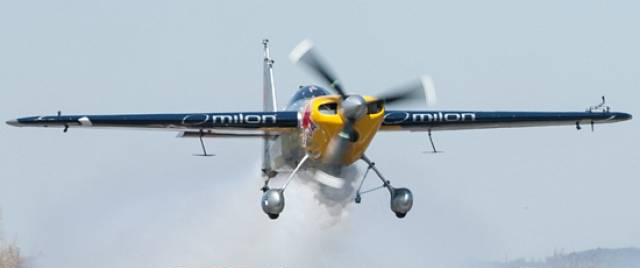 Edge 540 with zero dihedral designed for ultimate aerobatics
Edge 540 with zero dihedral designed for ultimate aerobatics
Think Red Bull Air Races. These aircraft are intentionally designed to roll faster than a greased ball bearing. It takes more skill and effort to fly precisely with zero dihedral.
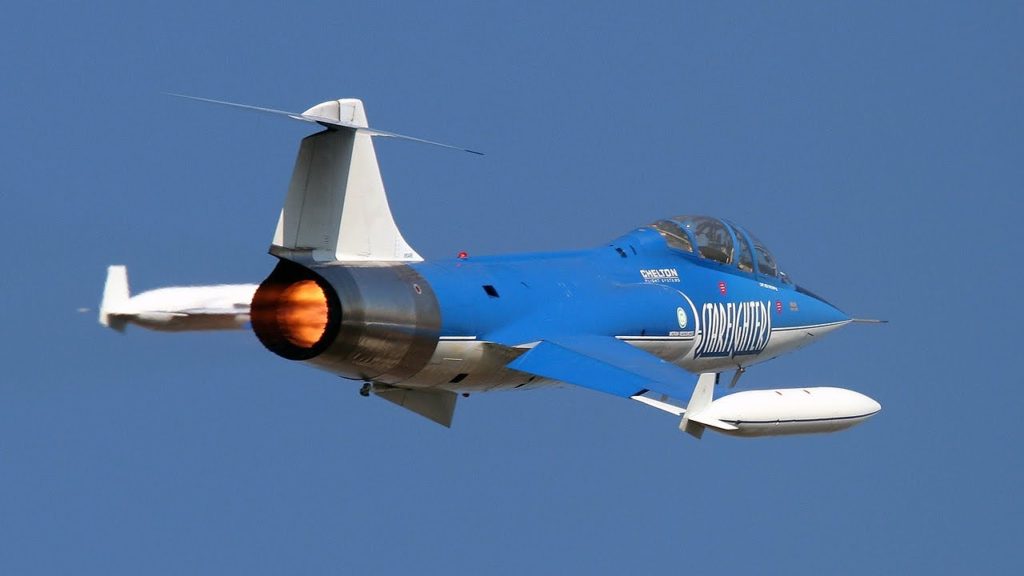 F-104 Starfighter with anhedral design for high speed
F-104 Starfighter with anhedral design for high speed
Anhedral (or negative dihedral) is usually indicative of minimal lateral stability and impressive roll agility. Generally requires a flight stability computer or two for any hope of decent human control. Usually only employed on supersonic fighter jets.
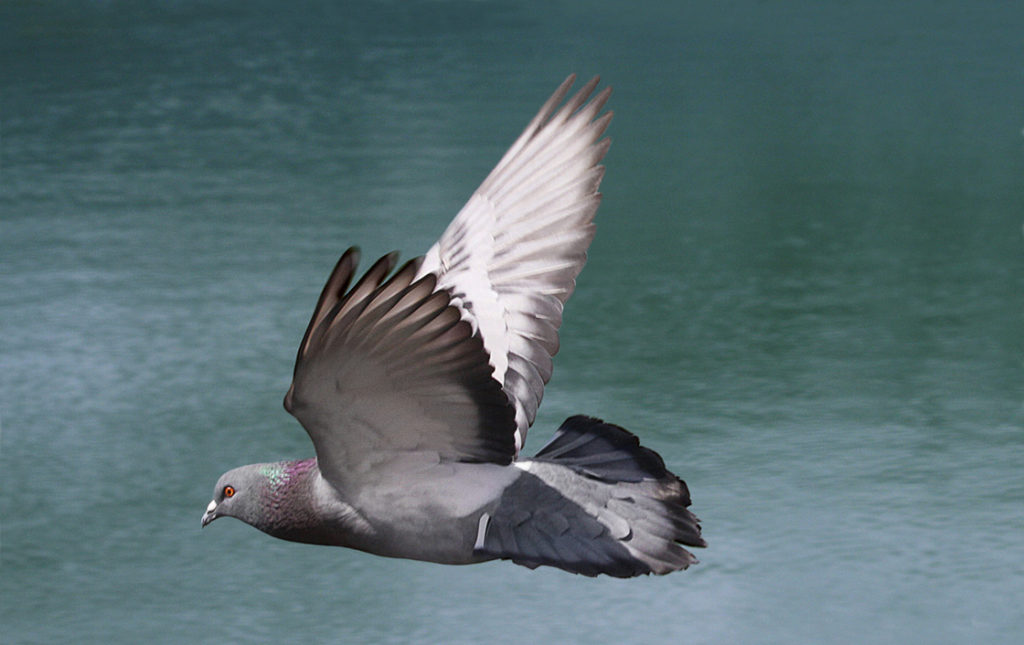 Pigeon gliding with high dihedral
Pigeon gliding with high dihedral
Nature also adheres to aerodynamic principles. For instance, have you ever watched a pigeon in gliding flight? They like to glide with massive amounts of dihedral. Pigeons are also terrible gliders. Don’t fly like a pigeon.
On the other side of nature’s aerodynamic spectrum is the swift, a supremely agile bird capable of flying an airborne pretzel maze at Mach 2. They routinely glide with a signature anhedral (or negative dihedral) wing profile, giving them superior flight agility.
Aircraft have a fixed dihedral tailored to a design flight profile. Wingsuits, like birds, are quite different. We have variable dihedral geometry and multi-pivot articulation (I made that fancy verbiage up, but essentially, our arms can flap in all directions). For us, dihedral is an EXTRA flight control input unique to wingsuits, affecting roll stability, dive stability and speed, all in different ways. More on that to follow.
WING SWEEP: For wingsuits, wing sweep is defined as the angle formed by the leading edge of your arm relative to the axis formed by your shoulders.
Video Player
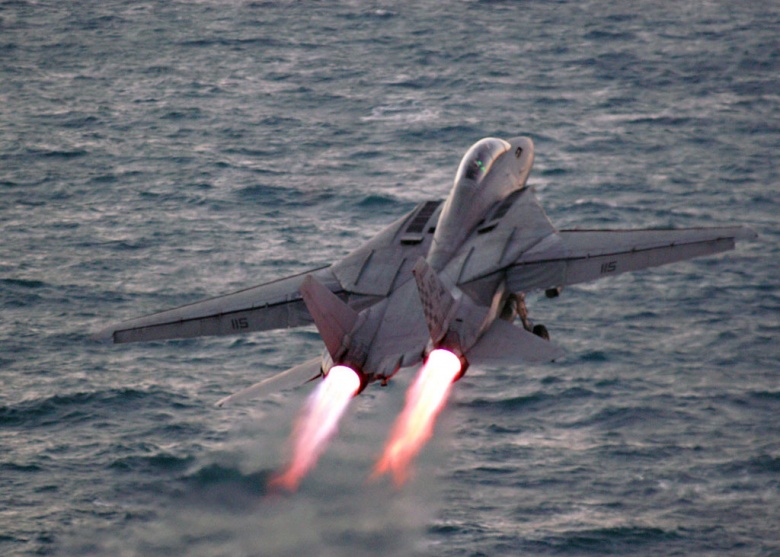 20º forward wing sweep used for takeoff and landing in the F-14 Tomcat
20º forward wing sweep used for takeoff and landing in the F-14 Tomcat
The F-14 Tomcat, famous for its variable wing sweep geometry, employed a forward wing sweep limit of 20º, used for slow speed flight, takeoff and landing.
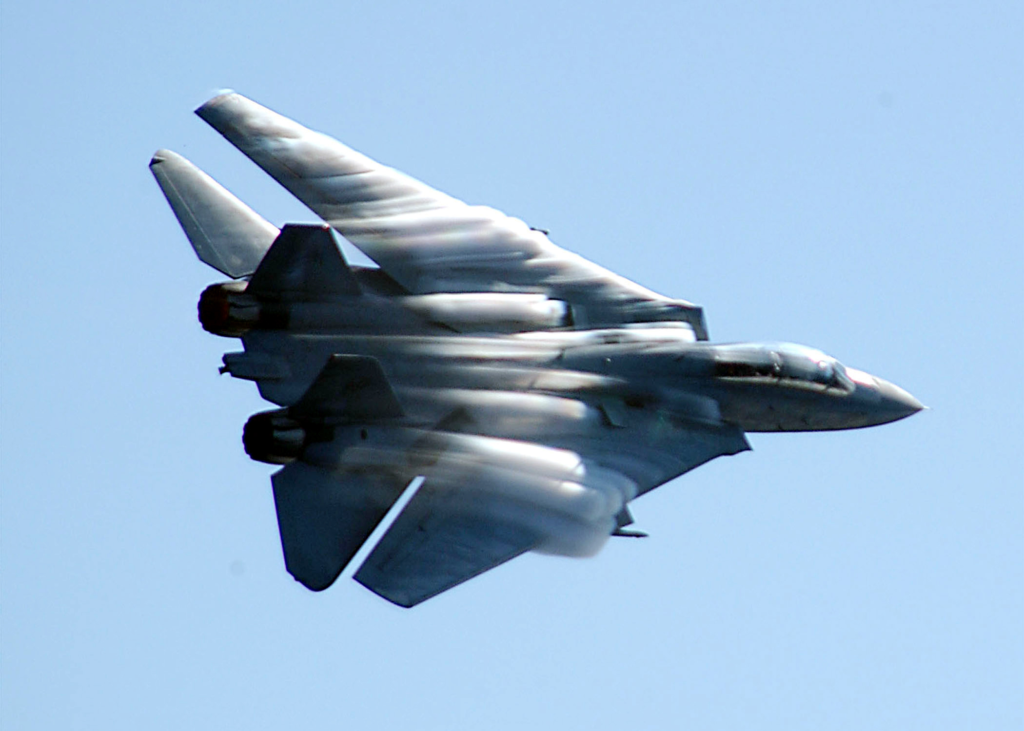 Aft wing sweep at 68º for high speed flight in the F-14 Tomcat
Aft wing sweep at 68º for high speed flight in the F-14 Tomcat
Aft wing sweep limit on the Tomcat was an impressive 68º, automatically programmed aft above Mach 0.7… or manually programmed aft whenever you wanted to look cool.
For wingsuits, there is an obvious design ‘wing sweep signature’ particular to each make and model. Race suits seem to be designed with more aft wing sweep than most, but the speed benefits are not necessarily guaranteed by merely incorporating an aggressive wing sweep angle.
Variable wing sweep affects a bunch of inter-related aero variables, such as center of gravity (CG), center of pressure (CP), effective surface area, stability for pitch/roll/yaw, and, you guessed it, speed.
One of the secrets of the now retired and de-classified F-14’s wing sweep capability involved a deflating airbag mechanism which created a cavity in the fuselage for retracting wing structure to occupy. When airspeed decreased and the wings swept forward, our secret airbag inflated to streamline the void left by the extending wing structure.
For wingsuits though, manually sweeping our arms aft of the design sweep generates a billowing of excess wing fabric that can’t be effectively retracted out of the airstream. Huh… can that possibly be a good thing for speed? Well, yes and no.
Aft wing sweep for wingsuits is nothing more than a distortion-induced, lift-dumping method to steepen your flight path. Sure, at the end of a dive with your arms pinned by your side, you may be vertically burning through the air at the speed of heat. And with some practice, that increased kinetic energy can be converted into an amazing flare. But an aft wing sweep dive burns up massive amounts of altitude that could have been more effectively used to actually fly somewhere other than down. Don’t get me wrong, exercising aft wing sweep is one of many tools that must be mastered by all wingsuit pilots. However, use of aft wing sweep in the BASE environment must be tempered with judgment.
Aft wing sweep input can help stabilize high vertical speeds. However, extra aft wing sweep induces fabric-billowing drag that hurts horizontal speed and distance. There are other methods of diving that keep your wing in a more efficient configuration. Matt Gerdes will discuss his thoughts on current competition-level speed techniques in Part 3.
Quantifiable and Explainable!
What’s interesting about using correct terminology is quantification is now valid. Dihedral and Wing Sweep are both measurable in angles of degrees relative to a defined axis. Excellent! Now we’re talking about the same thing to everybody, everywhere. And yes, since our arms can pivot on multiple axes, Dihedral and Wing Sweep can and often are used at the same time for us wingsuiters.
Okay, rant over. “Arms back” is out. Dihedral (Zero/Positive/Negative) and Wing Sweep (Aft/Forward) are in.
DISTORTION vs. STABILITY vs. PERFORMANCE
Aerodynamics is a science of compromise. Aircraft are usually designed to do one thing really well, at the cost of everything else. For example, airliners are designed to minimize specific fuel consumption, loosely translated as the least amount of fuel burned to fly one unit of human/cargo one nautical mile. To realize this design goal, airliners are unable to climb vertically, pull 10 G’s or land on aircraft carriers. You can’t have everything. From our ‘WTF are we really doing?’ discussion, we all remember that wingsuits are stupidly low efficient gliders, right? Wingsuits are designed to a best-case planform for a specific set of flight characteristics. Even then, with our human anthropomorphic constraints (T-Rex arms), we just don’t have much to work with. So, just from a common-sense approach, why on earth would you want to intentionally distort and de-tune your wingsuit? Dihedral is distortion. Any additional aft wingsweep is distortion. Dropping your knees is distortion. Letting your grippers weakly trail in the free stream is distortion. Flexible-airfoil, inflatable flying devices really don’t like distortion. Distortion generates performance-robbing drag. It’s that simple.
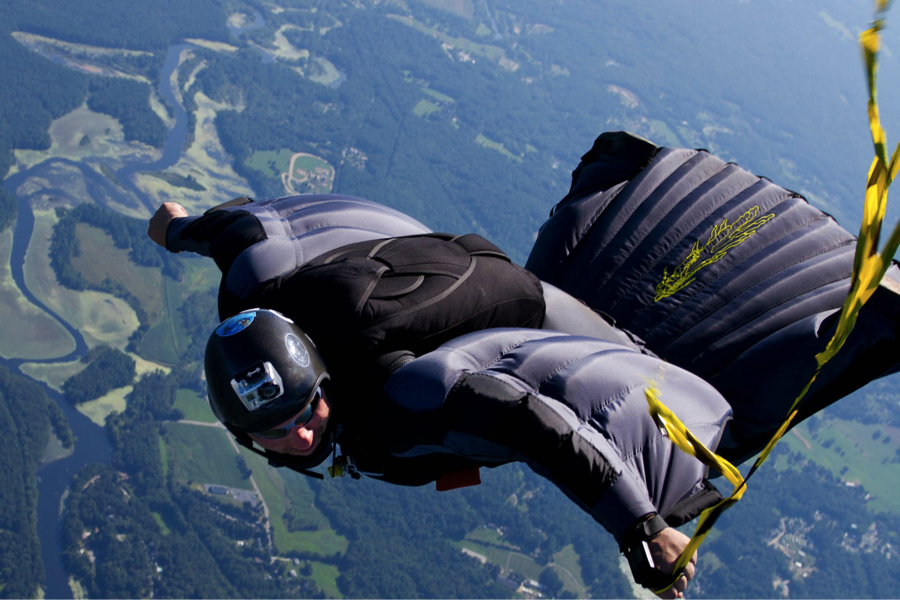 Performance wingsuit designers do not want their wingsuits flying like this purple flocker.
Performance wingsuit designers do not want their wingsuits flying like this purple flocker.
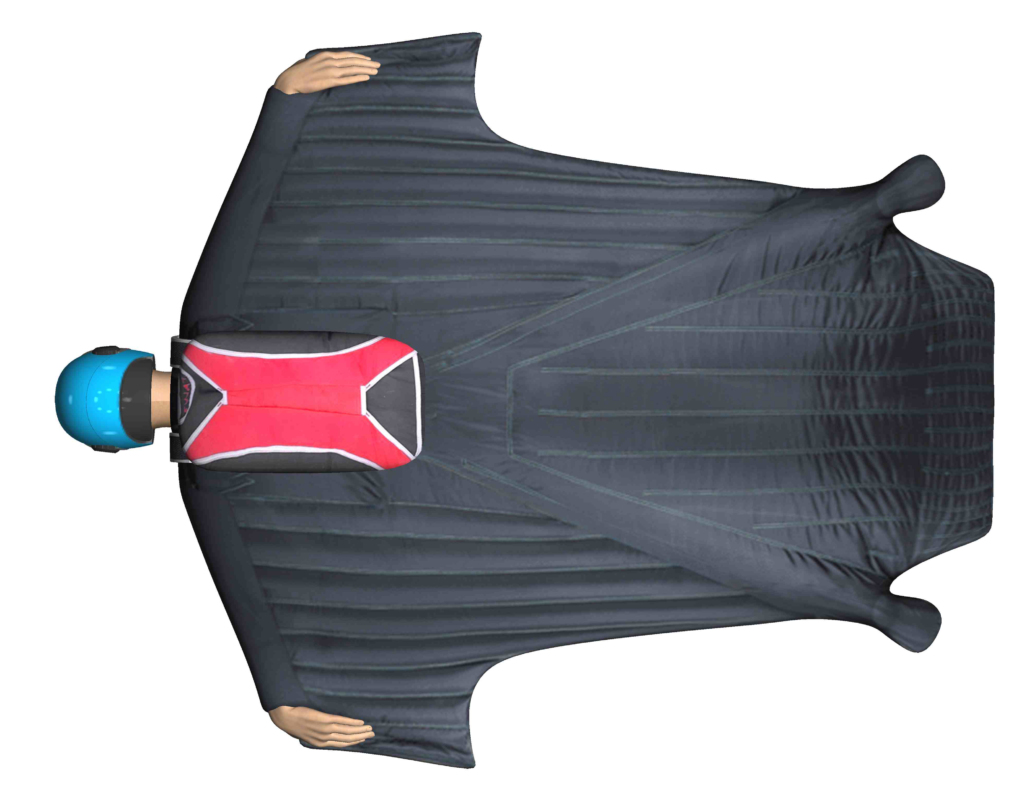 They design them to be flown looking like this!
They design them to be flown looking like this!
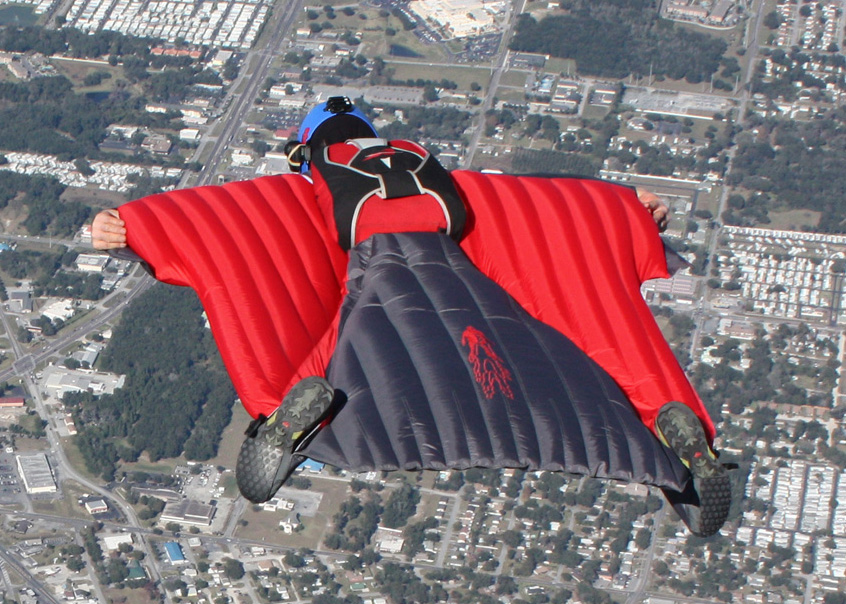 Note almost complete lack of distortion; full pressurization, zero wing sweep and zero dihedral.
Note almost complete lack of distortion; full pressurization, zero wing sweep and zero dihedral.
If you want to fly at maximum performance, start by eliminating all pilot-induced distortion!
DISTORTION vs. STABILITY vs. PERFORMANCE
Well, there’s a catch. Wingsuit pilots also want flight stability, which is the property of our wingsuit to stay where we tell it. Taking this one step further, stability is also a measure of our wingsuit’s ability to return to its original state if it gets bumped away from where we want it.
One of the reasons tandem instructors use a drogue chute in freefall is to add stability, not just slow their terminal velocity.
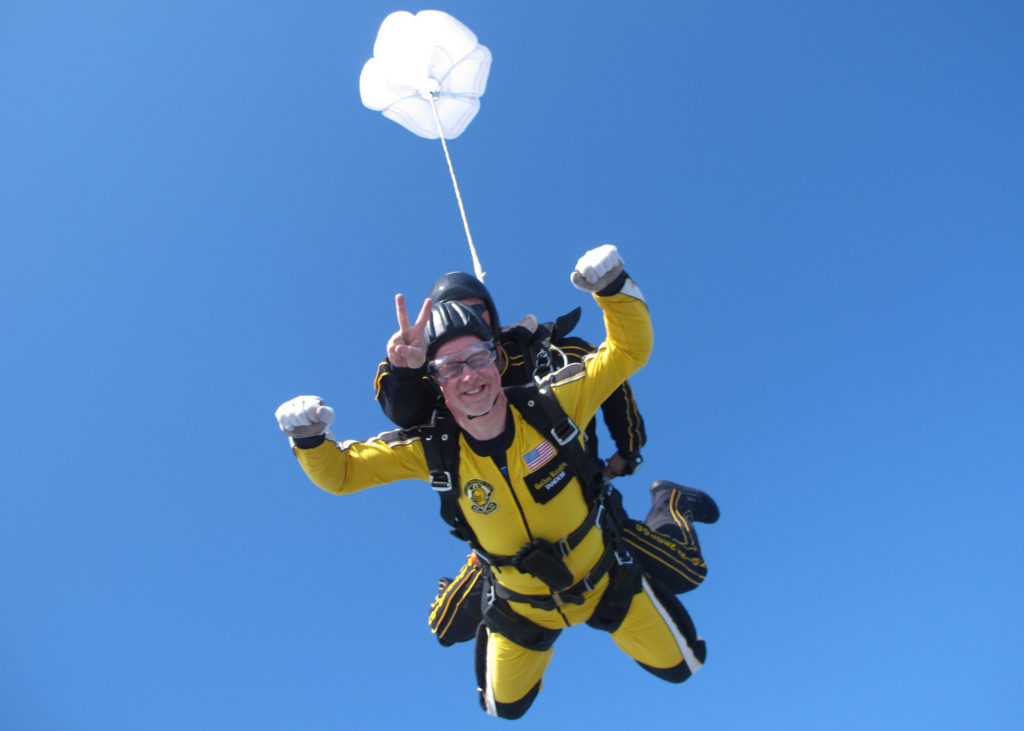 Tandem freefall stability is enhanced by a drag-generating drogue chute.
Tandem freefall stability is enhanced by a drag-generating drogue chute.
Stability for aircraft (and wingsuits) is created via the same principal. It’s just not as obvious. For us, stability is achieved via isolated regions of drag acting as micro versions of tandem drogue chutes on different points of our wingsuit.
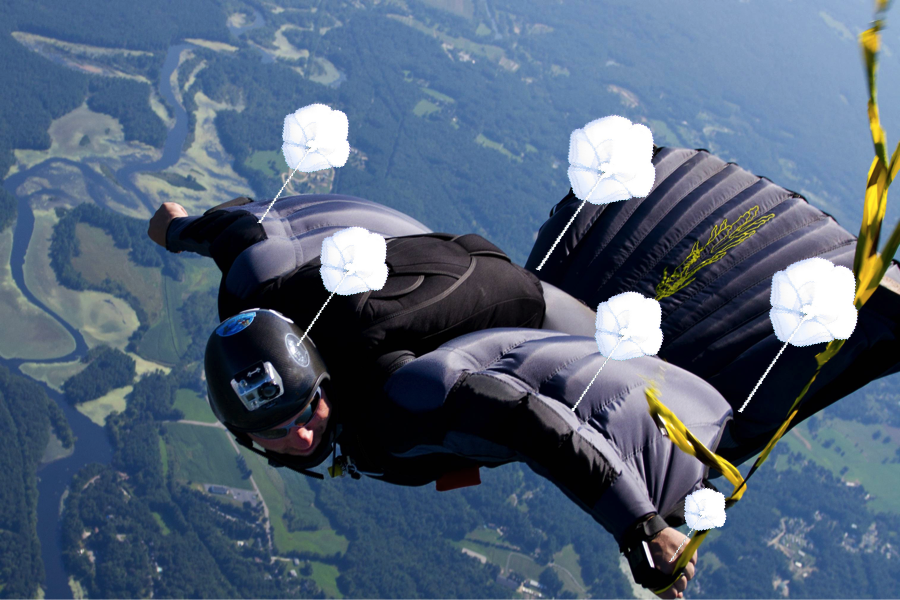 Stability is generated via balanced regions of drag
Stability is generated via balanced regions of drag
These drag regions increase in size depending on how much you distort and deflect your wingsuit, head, chest, knees, etc. Your brain acts as a flight computer to collectively balance all distortions keeping you stable on all three axes… Pitch, Roll and Yaw.
Reference system for flight stability and control
Stability is a good thing. A very good thing. However, more stability generallyrequires more drag. And drag kills speed. You can’t have everything.
The general, and I do mean general, correlation in wingsuit aerodynamics is this:
Lower Drag = Higher Speed and Lower Stability
Higher Drag = Lower Speed and Higher Stability
Have you ever eaten a face full of asphalt getting ‘speed wobbles’ on a skateboard? You’re bombing a hill, trying to go as fast as possible, leaning into it, tucking everything in. Everything’s great until you hit a certain critical speed, get an unexpected bump, and your board starts violently wobbling back and forth until you go flying. This is an example of losing stability at high speed. The same effect can happen with wingsuits, in any axis, so be careful!
DIHEDRAL and STABILITY
Our new favorite term, Dihedral, is great for roll stability, as discussed earlier. For wingsuits, dihedral is also great for pitch stability in dives. Flying with dihedral (think gliding pigeon) spills lift from your arms and allows your flight path to get steeper. Relative to your now-steeper flight path, the cross-section of your wingsuit resembles a nuanced shape of a drogue chute, creating drag, and thus, improving pitch and roll stability (less pitch and roll wobbles).
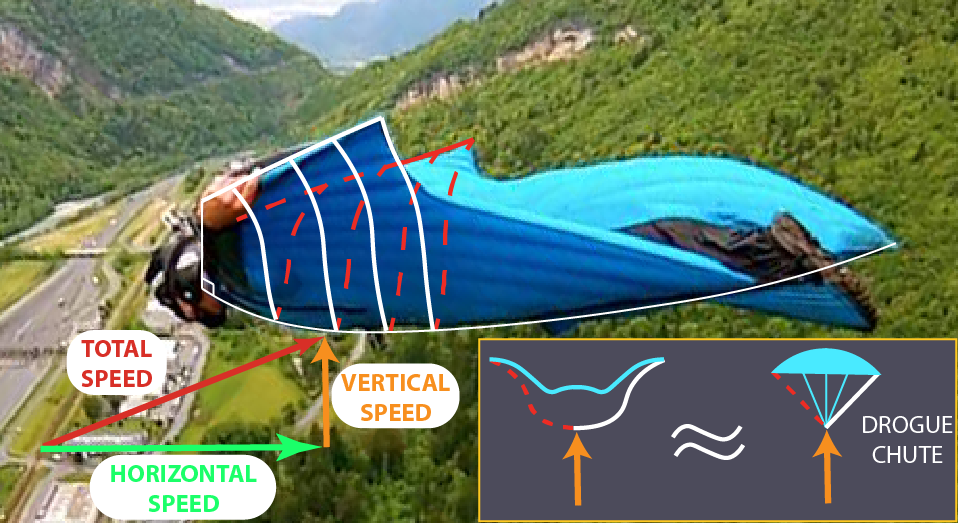 Dihedral can induce drag similar to a drogue chute
Dihedral can induce drag similar to a drogue chute
Flying steep lines using this exaggerated dihedral has been very popular in recent years. It is a remarkably stable configuration. However, there are some other techniques presented in Part 3 that, with practice, allow for a much more efficient flight profile, increased Available Lift, and higher speeds. Be warned: These benefits come at the cost of pitch and roll stability, so be prepared to train and practice!
Bottom Line: Dihedral helps prevent speed wobbles in roll and pitch for wingsuits. Dihedral also increases drag. Which kills speed. Again, nothing comes for free in aerodynamics.
ANGLE OF ATTACK
An astute and educated reader may notice an interesting omission concerning my approach to speed. By my count, I have only mentioned angle of attack (AOA) once to date on my blog. This omission is absolutely 100% intentional. AOA is a truly complex and nuanced variable even for fixed-wing pilots… meaning airplane pilots. Trying to convey AOA as it relates to flexible-everything wingsuits, well, I’ll be honest, I’m still trying to wrap my head around it, let alone explain it eloquently to you. There are too many distortion variables that need to be standardized and fixed first, before any semblance of numerical AOA discussion becomes relevant. Wingsuit experts way above my pay grade are having similar AOA discussion challenges. Trust me, we are working on this. For now, let’s put AOA on hold. There are plenty of other fundamentals that need to be solidly understood first.
TERMINAL VELOCITY
This is what I’m really talking about right now. Not vertical velocity, horizontal velocity, best glide, minimum sink, or any number of other airspeeds out there. ‘Total Speed’ on your Flysight (assuming zero wind) is just another term for terminal velocity. Terminal doesn’t mean absolute maximum possible. When talking about gliders and wingsuits, terminal velocity means the speed and direction you’re actually pushing through the air molecules at this very moment, in whatever wingsuit configuration or body orientation you happen to be in right now. It’s a fluid parameter, pun intended. The resistance of the air via friction on your wingsuit, combined with air pressure distributions over your body, stops you accelerating through the air molecules at some point. By definition, this is terminal velocity, whether you’re flying almost level or vertically straight down. Velocity is a vector parameter that defines speed in both a magnitude (size) and direction. Change your wingsuit configuration or body orientation, and all friction and pressure forces equalize to a new terminal velocity (total airspeed and direction). Forget what you learned way back in AFF about terminal velocity meaning only straight down.
The reason I’m hammering on terminal velocity right now is because our wingsuits are so inefficient, we have to take both vertical AND horizontal components of our wingsuit speed very seriously, not just horizontal. For example, diving at 1:1 glide ratio (45º flight path in zero wind) means 71% of our terminal velocity is vertical, and 71% is horizontal.
Flying at 3:1 glide ratio (18º flight path in zero wind) means 31% of our terminal velocity is vertical, and 95% is horizontal. These are scary speed proportions, unlike any other human flying device today. These proportions scream HIGH DRAG and LOW LIFT.
HERE’S THE REAL QUESTION:
How fast can you get your wingsuit to move through the air in fully pressurized planform? Can you freefly in full-flight wingsuit position, fully tensioned, with perfect spine alignment to the relative airstream? Essentially, can you fly vertically straight down in perfect wingsuit position as if you were flying level? I can’t, not even close. I’m not saying you should be able to either. But our flight performance envelopes are so small (3:1 at best) that we HAVE to legitimately recognize that our terminal velocity is the real player, not just horizontal velocity.
Here’s where I’m going with this. I firmly believe that in order to reach our goal of blistering horizontal speed, we need a 2-part training regimen.
- 1) Learn to fly in a controlled manner at your maximum terminal velocity in fully-tensioned full-flight body position with zero wingsuit distortion. This will be steep! Be prepared for instability. Don’t worry about what your horizontal speed may be. Focus first on maximum total speed (terminal velocity) in perfect position. Obviously, this training will be in the skydiving environment.
- 2) After mastering fully-tensioned zero-distortion maximum terminal velocity, we can start transitioning our maximum terminal velocity to a more horizontal bias. Working backwards from max speed on a drag polar curve (Gerdes will introduce this), we will intercept best-glide. Best-glide is that magical maximum ratio of lift-to-drag. It’s also only valid when flying in perfect, and I do mean perfect, body position. Tweak your toe pressure, change your gripper position, move your head, and your best-glide performance changes with your new configuration. It’s a nightmare combination of art and science.
Honestly, we’re kinda screwed if you want specific numbers. We’re currently resigned to individual learning via extensive trial and error. However, there is hope. Legitimate, customized performance coaching is rapidly becoming available. Skills camps are emerging. Competition leagues are forming. Want to know how the big dogs are training? Matt Gerdes and other competition racers have developed various speed training techniques that are repeatable and proven. It’s all coming in Part 3. Please stay with us.
Speed: Part 3 – Speed To Fly

Matt Gerdes submits the final installment in our 3-part Speed series; this article can also be found on topgunbase and base-book.com. This article can be read alone, but is also part 3 in a series:
Part 1: Why Fly Fast?
Part 2: Stability vs Drag
Part 3: Speed to Fly
One of the more important skills in wingsuit flying is the ability to fly fast safely in formation with your friends. Much of what you need to know about flying well, can be learned from practicing this one skill. In parts 1 and 2, Richard Webb explained to us what speed means in terms of safety in wingsuit flight, and how to understand the relationship between stability and drag. In this third part, let’s try to understand how to get our speed on.
The aim of this article is to clarify some points on wingsuit flight, and to encourage pilots to learn to fly fast. Words are thoughts, and in order to think clearly about our progression we need to cut inaccurate terminology from our sport.

I want to believe that you are willing to take the time to try and understand more than opening or closing your butt cheeks (see below). It’s fun to pretend to be an airplane, but your ass is not an elevator.

In this article, we will try to explain two separate fundamentals of wingsuit flight: Angle of Attack, and Wingsuit Configuration (formerly known as “Body Position”). We will examine how separating these two concepts and thinking about them independently may help us to fly better.
What is Wingsuit Performance, Anyway?
Wingsuit pilots often ask us what “tricks” we recommend for increasing performance. Many of the tips we have heard are based on the idea that “performance flying” is gliding for distance at flat, slow, minimum-sink angles. While flying slowly is not always a problem in the skydiving environment, it is not ideal. So how fast should we be going in any given situation? This concept in gliding flight is sometimes referred to as “Speed to Fly”. Luckily, for wingsuit flying it’s not that complicated. The answer to this question is, generally: “As fast as possible”.
How fast should we be going in any given situation? …generally: “As fast as possible”
The idea that “speed is good” is surprisingly uncommon in today’s world of wingsuit instruction. I am of the opinion that a fundamental misunderstanding of proper airspeeds has led to unnecessary wingsuit BASE fatalities in which pilots have been without the skill resources needed to assess or complete a line of flight. Many skydivers are being taught to fly their wingsuits too slowly to make use of their suit’s full potential, and many more totally lack an understanding of what healthy forward speed is. While this is not just a wingsuit BASE issue, from August 2015 to October 2016 more than 10 BASE fatalities can be attributed to improper airspeed.
So, when we want to fly our wingsuits at max performance, what do we mean? Is max performance flying far, or flying fast, or flying for a long period of time? I would argue that the most important aspect of performance flight to focus on is horizontal speed with precision and control.
More than 10 [recent] BASE fatalities can be attributed to improper airspeed
Performance flying is fast flying
In skydiving, a common measure of performance is “vertical speed”, which is also referred to as “sink rate” in gliding flight. Regardless of what it’s called, the concept we must grasp is that a low sink rate is not something that we should be concerned with. I don’t believe that we should be focused on reducing vertical speed. It is more important to train for a high horizontal speed.
The best way to train horizontal speed is to fly side by side with your friends, as close as is possible / comfortable / safe. Edge ahead of the friend next to you, forcing him to adjust his wingsuit configuration (formerly known as body position) and AoA to overtake you – then use him as a reference to pass, again. Training for speed in small formations of two to three pilots will allow you to use one another as reference points to gauge performance adjustments. Keep your first speed formations small, at three pilots max, to begin with. Safety in formations and proper flight patterns are a completely different chapter, but a small group flying close together in the same direction is the basic idea.
INFO: INSTRUMENTS
Using a GPS or audible device such as a Flysight can be very useful for broad estimates, but don’t get too caught up in the minutiae of recorded data. GPS instruments are generally an inaccurate way to judge wingsuit performance due to the difference between airspeed (how fast you are actually flying) and groundspeed (what your GPS measures). Over the course of many jumps, and taking into consideration winds aloft forecasts and the winds reported by your pilot, a GPS can be a productive tool only if you aren’t making fine comparisons from jump to jump. Your speed readings will vary by 20+ mph from day to day depending on the altitude of your speed run, the wind conditions, and even slight heading changes in said conditions. Because of this inherent variability, we do not use GPS devices to test for speed; we rely solely on side-by-side comparisons between two pilots of similar size. (The differences between the highest performance wingsuit prototypes are often less than 2mph airspeed, but it is nearly impossible to fly through 10,000 feet of altitude on a skydive without encountering significant (as in >5mph) vertical and horizontal movement in the airmass, rendering instrument data comparisons mostly useless within such a narrow range of performance. Side by side testing is best).
While recorded data is not a useful or reliable way to gauge performance, an audible Flysight is a useful tool when flying solo. Audible feedback set to horizontal speed will help you to find the fastest position, and angle, while you are flying.
Three Performance Facts
1. GREEN ZONE – As our horizontal speed increases, our sink rate (vertical speed) will also increase (except when pulling out of a dive). Remember that it is ok to go down faster! Train for max horizontal speed, not min vertical speed. In this green zone, horizontal speed is the focus.
2. ORANGE ZONE – If we decrease our sink rate while optimizing our angle, we increase glide performance. However, best glide (or MID speed, see insert below) is not the healthiest speed to fly in a wingsuit because it is relatively close to stall and leaves us with less power in reserve (less speed equals less available lift, less kinetic energy, and zero power to increase glide performance if it becomes necessary). Do not make a habit of sacrificing speed for glide! (Orange zone).
3. RED ZONE – It is possible to decrease sink rate below the point of best glide, resulting in slow forward speed and a low sink rate (low vertical speed). Focusing on “time”, or reducing vertical speed to a minimum, teaches near-stall flight and poor glide performance. This slow speed, near-stall flight, is one of the most common bad habits in wingsuit flying. (Red zone).
The “red zone” should be a familiar feeling, so that if you ever find yourself there inadvertently, you should be hearing cockpit alarms in your brain
The polar curve below will help us to understand the relationship between glide, speed, and sink rate. Remember that in wingsuit flying, training for “best glide” or “lowest vertical speed” can reinforce bad habits. That doesn’t mean you should never do it, but, when training for these skills, maintain an awareness of the importance of horizontal speed.

On the wingsuit polar curve, note that the Stall Speed, Min Sink speed, and Best Glide speed are all marked. Beyond the best glide speed, the wingsuit airspeed increases together with the sink rate – as we fly faster, we descend faster, which is not a bad thing.
INFO: MAX IMPACT DISTANCE (MID) SPEED
Rich Webb says: “Since there is nothing ‘best’ about Best Glide, I’d like to coin a new term for ‘best glide’ for us inefficient wingsuiters: Maximum Impact Distance Speed (M.I.D. Speed). This helps weaken the subconscious suggestion that flying wingsuits at ‘best glide’ is ‘best’. It’s not, most of the time.
“Flying at MID Speed will get you to the farthest possible impact point. If you fly either faster or slower than MID Speed, you WILL impact shorter, guaranteed. However, flying significantly faster than MID Speed over suitable terrain will also give you increased available lift and maneuvering capability, making you a safer wingsuit pilot. Flying routinely AT or BELOW MID Speed will not give you any margin for maneuvering or flaring, making you an accident waiting to happen.
Flying routinely AT or BELOW MID Speed will not give you any margin for maneuvering or flaring, making you an accident waiting to happen
“MID Speed also has a nice mnemonic ring to it… MID helps us remember that MID Speed is in the middle, between Min Sink Speed and Max Horizontal Speed, and is not necessarily a Target speed for normal flight (as ‘best glide’ subconsciously implies)”
We want to keep our airspeed well above the point of best glide (MID Speed). That green section on the polar curve where airspeed and sink rate increase is our ideal speed range for both skydiving and BASE jumping. This is the speed range that allows us to use retained energy to increase our glide performance in order to extend our glide path or disconnect from terrain, but is not so steep as to be uncomfortable or inefficient.
Training to keep yourself at (MID) best glide airspeeds can result in a tendency to fly too slowly, too close to stall, and with zero energy reserves to increase your glide when the need arises. In short, the closer you fly to “best glide” (Maximum Impact Distance speed), the less available lift, or “reserve”, you have in store. Flying a wingsuit safely means having enough airspeed to significantly increase your glide or make a significant course correction without stalling your wingsuit.
Flying a wingsuit safely means having enough airspeed to significantly increase your glide or make a significant course correction without stalling your wingsuit
INFO: COCKPIT ALARMS
You can practice flying at each segment of the polar curve in order to learn what each segment feels like. Practice flying at min sink, near stall, and practice stalling your wingsuit. The “red zone” should be a familiar feeling, so that if you ever find yourself there inadvertently, you should be hearing cockpit alarms in your brain. If you are looking at a line of flight that requires best-glide / min-sink / near-stall flight, alarms should be sounding in your head well before you commit to it. Low speed flight kills wingsuit pilots in the BASE environment.
INFO: WHERE IS YOUR CENTER OF GRAVITY?
The wingsuit center of gravity (CoG) is often behind the center of pressure (CoP), meaning the natural tendency of some wingsuits is to fly head-high.
Flying too “flat” is the single most common error in wingsuit flying, and the most common bad habit
The center of gravity and the center of pressure (where the lift force is concentrated) on an airplane are usually located very close together. Wingsuits are sometimes different. An average human’s center of gravity is located anterior to the sacral spine, or around your belly button. The center of pressure on a wingsuit is generally located higher (more forward) but CoP moves with changes in Angle of Attack. Imagine that you are being suspended by lift from between your shoulder blades, but your CG is at your belly button: you will tilt head-high. Because of this, many wingsuit pilots have a natural tendency to fly too flat, and too slowly, settling into a position that is too head-high. It requires conscious physical effort to pilot your wingsuit into a steeper angle of attack. Flying too “flat” is the single most common error in wingsuit flying, and the most common bad habit. Without a certain amount of airspeed, wingsuits don’t work well. Airspeed in gliding flight comes from angle… so keep reading. Many instructors teach their students to fly flat, slow, and close to stall, thereby building a boring and dangerous foundation for their student’s wingsuit career. If your wingsuit instructor tells you to “open your butt-cheeks”, beware!


Now I’m sure you’ve been excited to get to the part about Wingsuit Configuration (Formerly known as Body Position), but the single biggest barrier in wingsuit performance flying is overlooking Angle of Attack. So close your butt-cheeks, drop your elevators, and let’s talk AoA!
Angle of Attack
Imagine you are standing on the side of a talus slope with a radar gun. Two wingsuit pilots are going to fly by, and you’re going to take a picture of them from the side and check their speed. They are both flying the same exact line. They are flying the same wingsuit. They have the same exit weight. And they are both exactly 20 feet off of the talus for the section of their line that we are observing them…
One is Scotty Bob, and as he zooms past you see that his arms are level with his shoulders and the angle of his efficient-looking position is sort of pointed “low”. He zooms past at 140mph on the radar gun. Scotty is flying well above MID speed – he has massive amounts of available lift to flare or maneuver.
The other pilot is Burbly Scott and he just started skydiving last year but he loves his new big wingsuit. Remember, Burbly is flying exactly the same line, at the same distance from the ground, and the same trajectory. Here he comes, and his arm position is such that his wrists are higher than his head (Dihedral, see Part 2), his knees are slightly bent, and it looks like he is actually arching a little… you can see that his head is actually kind of high, and it looks like he is just plowing through the air. The angle of his bent / swept / arched suit looks inefficient by comparison, it’s almost like his position is sort of pointed “high” compared to Scotty’s. You look down at the radar gun and it reads 85mph, definitely not impressive.
Technically, Angle of Attack is not related to the horizon, it does not define the direction you are flying, and it cannot be described as “steep” or “flat”. But don’t worry too much about that, all we need to know for our wingsuit application is illustrated in this drawing (below). The first guy (fig A) is doing it right. The second guy (fig B) is… “doing it”. (“yee-ha Burbly Scott, yer doin it!”).

So how stupid and dangerous is Burbly Scott, really? The fact is that one can consistently “get away with” this wingsuit configuration on steep lines of flight. But the moment you take this wingsuit configuration over slightly flatter terrain, then: you – are – dead. We could say that a wingsuit pilot who relies on this more stable but highly inefficient wingsuit configuration is an accident waiting to happen. And it’s not just about WS BASE: Burbly Scott’s wingsuit configuration is the root cause of countless embarrassingly ugly and painfully slow and tragically boring wingsuit skydiving videos. It also happens to be a factor in dozens of wingsuit BASE fatalities.
INFO: AOA THOUGHTS
Your AoA is the angle at which your body’s flat plane is pointing relative to the direction of flight, relative to the air mass. AoA is not flight angle… AoA is the angle at which you are pointing along your direction of flight.
In gliding flight, a lower AoA means higher airspeed. A higher AoA means a lower airspeed. AoA is not glide ratio.
A pilot must actively manage AoA. No wingsuit will automatically settle into the perfect AoA for each aspect of flight.


When you think about speed and performance, think about AoA separately from body position (now known as Wingsuit Configuration!). AoA is the angle that you present yourself to the airmass. As you visualize acceleration, flaring up, deploying your parachute, transitioning to backflying, executing barrel rolls, or flocking with your friends, think about your AoA in the air mass. Doing so will increase your spatial awareness and allow you to improve your understanding of wingsuit flight, enabling a faster progression.
INFO: A NOTE ON “BODY POSITION”
Rich Webb recently pointed out to me that Position is not an aerodynamic term. It’s a location term. In aviation, we use:
1) CONFIGURATION: Flaps down, flaps up, gear down, speed-brakes out, etc
2) ORIENTATION: Nose up, nose down, inverted, etc
The two terms are isolated and not interchangeable. ‘Position’ is confusing, just like ‘Arms back’. Rich intentionally uses ‘Configuration’ and ‘Orientation’ [in TGB articles]. Therefore, moving forward, we will refer to Wingsuit Configuration, not Body Position.
Wingsuit Configuration
AoA is independent of wingsuit configuration.
The critical thing to understand here is that as long as your wingsuit configuration is mostly flat and resembles an inflated wingsuit, your configuration does not change your flight performance as much as a change in AoA will. You can hold an efficient configuration through a range of AoA and achieve performance in speed, distance, and time, without changing anything except your AoA. The same exact configuration held through different AoAs will yield different results. Sure, subtle changes in your wingsuit configuration will optimize your performance at each angle, but AoA is the major factor.

SPEED: The Efficient Configuration
In general, we want to arrange our bodies into a shape that allows air to flow across the top and bottom surfaces of our suits with minimal disturbances. We want curved airflow across the top of our wingsuit from shoulders to toes, and we want smooth airflow across the bottom. The easiest way to disrupt airflow on either surface is to bend our knees or distort our arm wings. Doing so disrupts the laminar flow on the surfaces of our suit, which is not good – distorting the top surface actually reduces the laminar flow that creates lift. This is bad for performance, so keep your legs straight, arms strong and level, and your toes pointing lengthwise tension into the suit.

If you were to picture yourself lying face down on the sidewalk, the max-performance configuration would mean that only your face and your tip-toes would be touching the ground, with your wingtips just barely off the ground. Your body would be forming a gently de-arched position from head to toe. It’s that simple. This smooth de-arched position encourages laminar airflow over the top surface of your wingsuit from head to toe, and a smooth bottom surface to deflect air in the most laminar fashion possible. Please note that saying we are creating an “airfoil” with our body would be inaccurate, and would deeply upset an aerodynamicist (the only airfoil present is built into your arm wing).

Bring full tension into your suit by “shrugging” your shoulders forward, pointing your toes as much as you can, and creating a slight concavity in the front of your torso. Push your forearms into the leading edge of the arm wings. Combining this position with a lower AoA (tilt lower) will yield the highest speeds. Increasing your AoA (tilting higher) will start you on a glide path for longer distances.
Want to slow down, or flare up? Think about changing your angle, not your wingsuit configuration – push your toes down toward Earth. You have an incredible amount of pitch control available in your legs. Never initiate a flare by bending your knees – that’s not flaring, that’s air-braking. Remember that results always depend on the angle of attack that you orient your wingsuit configuration into.
The key concept here is that AoA and wingsuit configuration are separate factors, and should be considered separately in your mind when you think about flying your wingsuit. As you strive to reach max performance in your suit, make adjustments to your angle and your configuration separately, and with an acute awareness of how the two factors combine and yield results.



